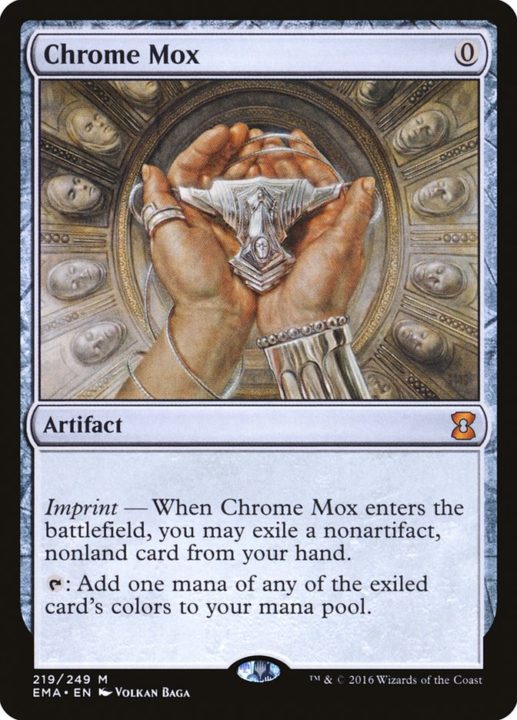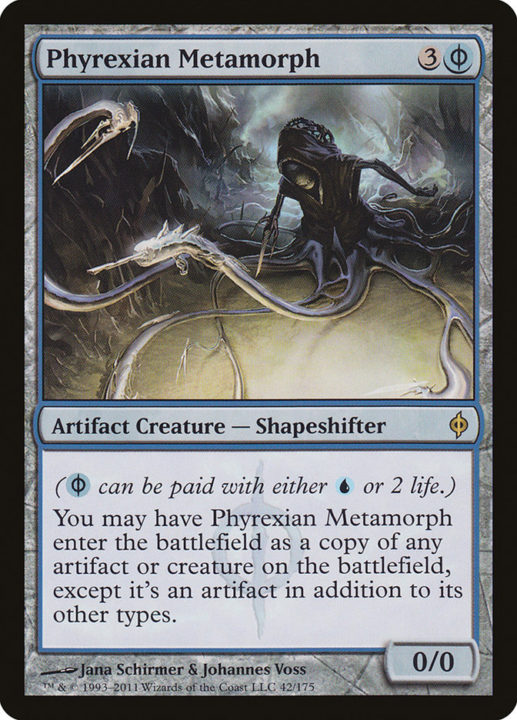I don’t know about you, readers, but for me, one of the reasons Magic is such an enduring hobby is because it’s actually many similar hobbies/games stuffed into a trenchcoat. Even if I get tired of Standard, I can play some Legacy for a completely refreshing yet familiar play experience. Or Commander, or Booster Draft, or mental Magic if my friends don’t want to get their cards out!
I’m always on the lookout for new directions to explore in our favorite game, but Cube Draft is one I’ve never been able to work up the courage to try. The format, where players draft from a customized selection of powerful cards rather than a specific expansion set, is hugely popular on MTGO, and its devotees are not shy about singing its praises. But the depth of design choices which make building a Cube appealing also gives the format an aura of unapproachability. I know I’m not alone in feeling that way, either.
COMMUNE WITH THE CUBE SAGES

To learn more about the basics of Cubing, I reached out to two of the format’s most celebrated proponents. April King (@CubeApril) is a highly visible and respected member of the online Magic community, working on premier card search engine Scryfall and leading discussions on Cube and other key topics. Jonathan Brostoff (@Jbrostoff) is the SCG People’s Cube Champion and a Magic streamer on Twitch. He also organizes CUBECON, a one-of-a-kind event where Cube veterans and curious newcomers can play a variety of acclaimed Cubes. If you want a taste of what Cube can offer, CUBECON is the best place to jump in.
As some of Cube’s most qualified ambassadors, I wanted to know how April and Jonathan would sell the format to curious Magic players. Jon’s response was to-the-point: “It’s the most fun, interesting and creative form of Limited Magic ever made!”
“Unlike other formats which are about building a deck to play, Cube is about building a format,” April added. “For people who enjoy the process of building things, it’s hard to find an experience that compares to creating a Cube.”
Both of them emphasized the personal expression and creativity associated with both designing and playing Cube, which is already a huge driving force behind popular casual formats like Commander.
GETTING THE CUBE ROLLING

As both a format and a community, Cube can be a little insular. In online discussions, experienced Cubers focus on the minutae rather than the broad strokes needed to reach that level of fluency. So how does one go from enjoying Cube online or at a friend’s house to building one? The best way to figure out what you want from a Cube is to draft as many as possible.
“People ask me this (how to start building Cubes) A LOT, and my advice is unwavering,” April explained. “Find a public Cube that hits a lot of the cards and archetypes that you like, and personalize it from there. Trying to build a brand new cube without a decent base is incredibly daunting, and I certainly wouldn’t recommend it to someone who is just getting started.”
Her own journey to Cube mastery backs up this approach: “My first and primary Cube is a Legacy Cube. It was modeled after one of the early Wizards Cubes from Magic Online. Over the last decade or so, it has diverged quite sharply, but it still tries to maintain a very “MTGO Legacy Cube” power level and feel.”
Jonathan made the jump from playing to designing Cubes very quickly, but still took a hefty dose of inspiration to start. “My first Cube was a durdle Power Cube. I had only played a handful of other Cubes before that, but I was hooked right from the jump!”
His advice for novice Cube builders? “When your destination is determined, your path will become clear. What are you looking to get out of the Cube experience? Build accordingly.”
MAKING MAGIC YOUR OWN

The Cube community aims to create new, personal variants of Magic, utilizing the full spectrum of potential experiences. While it’s fun and inspiring to see how other designers curate Magic, it’s almost inevitable that you’ll want to make your own Cube to capture the cards and playstyles you find most appealing. But how do our experts go about building such an idea into a full, working draft format?
Jonathan says he likes to go by feel, sprinkling in powerful cards he thinks will be a blast to play. “Cube design is all art to me,” he says. “I think that modality and choice are the most important pieces to include” — he mentions Fractured Identity as a favorite example — “but that’s the beauty of Cube — there are really no wrong answers, just try and try again!”
With a project as complex as a Cube, your first attempt will inevitably be a working draft. April told me her Legacy Cube has taken a decade of constant iteration to finally feel complete.
“In my experience, most Cubes start to feel pretty decent about a half-dozen or so drafts in,” she says. “You can generally expect the first few drafts of a Cube to feel really rough.”
I asked April about some common pitfalls first-time designers can avoid when building Cubes. “One of the most common mistakes that people make is not making aggressive strategies strong enough,” she says. “It’s not necessarily glamorous, but aggressive decks really do a good job of keeping Cube drafts from devolving into just midrange and/or control slugfests, which do start to feel the same after a while.”
She also emphasized that even the most creative designers shouldn’t overlook the fundamentals of Magic. An even curve and color distribution will ensure your Cube produces functional decks, especially for players drafting aggro.
THE TAXONOMY OF CUBES

Many players who enjoy the Magic Online Legacy and Vintage Cubes will go on to build Cubes with a similar “greatest hits of Magic” premise and power level. The Cubers who don’t go this route often anchor their design with some sort of gimmick or strong overarching theme. This both gives the Cube a memorable identity and narrows down the pool of cards to include. Building a smaller-than-normal Cube (often the “minimum” draft number of 360 cards) or restricting the card pool to lower rarities can make building a Cube more affordable as well.
While his own Cube focuses on classic powerful cards, Jonathan also enjoys designs which go beyond the staples. “Keep it singleton,” he advises, “but I think non-standard twists are fun, and worth exploring. For players starting on a budget, try a Pauper Cube list or the MTGO Uncommon Cube.”
From there, more and more unusual options pop up: Cubes utilizing Commander rules or the draft-affecting cards from Conspiracy; Cubes where players draft more than one card per pick; creations designed for Cube-adjacent formats such as Battle Box. Truly, Cubing is a mirror to the rich variety of Magic as a whole; it offers enough that many in the community eventually become “Cube-only” players, leaving other forms of the game behind.
April has a few caveats about recommending specialized Cubes to new designers. “Having a strong theme for a Cube can make for an incredibly fun experience, but if often comes with the drawback of limiting replayability. If it were frequently drafted with different groups, or it was pulled out once a year, I would definitely go for something weird. I really enjoy seeing Cubes that dive deep into certain aspects of gameplay, like the graveyard, or that play around with the rules or the format.”
CUBE: FORMAT OF THE FUTURE

Cubing is not remotely new, but it has never really expanded beyond a devoted niche of the Magic community. We’ve explored the reasons for that, but overall, Cube seems to have a lot of untapped potential for popularity. In fact, it has a lot in common with Commander: a focus on variety and self-expression, the lack of a dictating tournament metagame, and the potential to play all your favorite cards from Magic history. It’s tempting to imagine what might happen if Wizards put official support behind Cube, just as it has with Commander.
Jonathan knows a lot about competitive Cube play, but he believes the format can cater to all skill levels. Has he tried using Cube to introduce brand-new players to Magic? Did it work?
“Yes and yes. I made a “vanilla” Cube, which was pretty simple even for new MTG players.”
April is much more circumspect. “I don’t think draft is a particularly great format for NEW new players, so Cube has a pretty tough go there. I think you could definitely build a Cube that would work well in Sealed; that would probably be a good introduction once they’re past the basics.”
So, what does April recommend for players buying into Cube in the meantime?
“Look around on CubeTutor and the like for Cube lists focusing on lower rarities (Pauper/Peasant) or any of the many Cubes that focus on inexpensive cards. Keep in mind that even when you’re watching your budget, it adds up super quickly when you’re talking 540 cards or more.”
One such Cube list is Card Kingdom’s own Starter Cube. It provides a balanced base for minimal cost out of the box, and can be updated and improved over time.
Jonathan suggests we may already have something close to an official Wizards Cube on the market. “The Mystery Booster packs are a good start, and I think their standard price point is fine.”
Would he like to see more for Cube though?
“HELLYA!”
Special thanks to both April and Jonathan for contributing their expertise to this article. CUBECON 2020 is coming May 23-25 in Madison, Wisconsin; you can learn more at the event website. CubeTutor and CubeCobra are excellent places to begin browsing Cube lists online for inspiration, or eventually host your own. Happy Cubing!

Tom’s fate was sealed in 7th grade when his friend lent him a pile of commons to play Magic. He quickly picked up Boros and Orzhov decks in Ravnica block and has remained a staunch white magician ever since. A fan of all Constructed formats, he enjoys studying the history of the tournament meta. He specializes in midrange decks, especially Death & Taxes and Martyr Proc. One day, he swears he will win an MCQ with Evershrike. Ask him how at @AWanderingBard, or watch him stream Magic at twitch.tv/TheWanderingBard.

